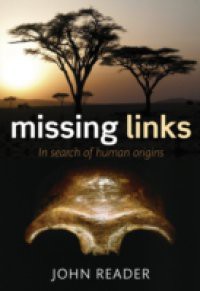This is the story of the search for human origins - from the Middle Ages, when questions of the earth's antiquity first began to arise, through to the latest genetic discoveries that show the interrelatedness of all living creatures. Central to the story is the part played by fossils - first, in establishing the age of the Earth; then, following Darwin, in the pursuit of possible 'Missing Links' that would establish whether or not humans and chimpanzees share a common ancestor. John Reader's passion for this quest - palaeoanthropology - began in the 1960s when he reported for Life Magazine on Richard Leakey's first fossil-hunting expedition to the badlands of East Turkana, in Kenya. Drawing on both historic and recent research, he tells the fascinating story of the science as it has developed from the activities of a few dedicated individuals, into the rigorous multidisciplinary work of today. His arresting photographs give a unique insight into the fossils, the discoverers, and the settings. His vivid narrative reveals both the context in which our ancestors evolved, and also the realities confronting the modern scientist. The story he tells is peopled by eccentrics and enthusiasts, and punctuated by controversy and even fraud. It is a celebration of discoveries - Neanderthal Man in the 1850s, Java Man (1891), Australopithecus (1925), Peking Man (1926), Homo habilis (1964), Lucy(1978), Floresiensis (2004), and Ardipithecus (2009). It is a story of fragmentary shards of evidence, and the competing interpretations built upon them. And it is a tale of scientific breakthroughs - dating technology, genetics, and molecular biology - that have enabled us to set the fossil evidence inthe context of human evolution. John Reader's first book on this subject (Missing Links: The Hunt for Earliest Man, 1981) was described in Nature as 'the best popular account of palaeoanthropology I have ever read'. His new book covers the thirty years of discovery that have followed.

